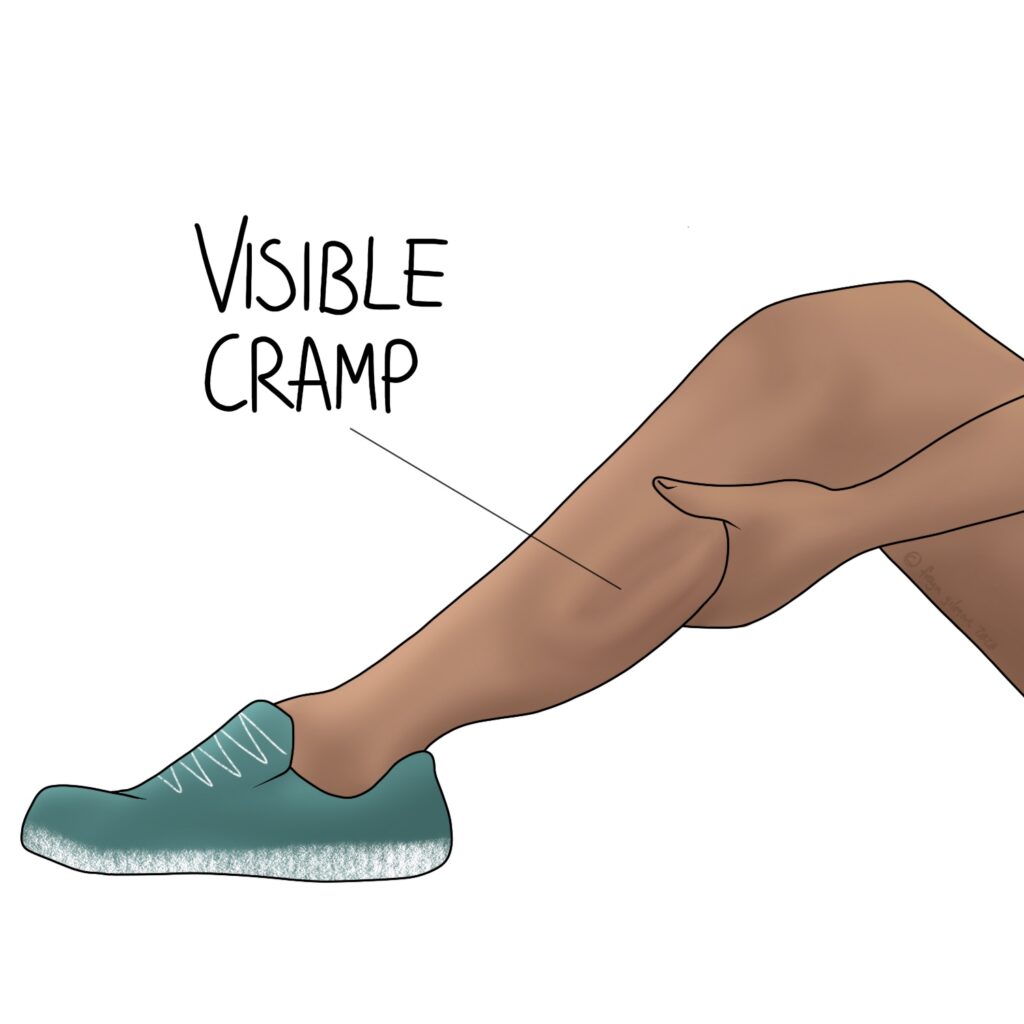Muscle cramps can be excruciating, but annoyingly, most seem to come on for no reason. We know that some groups of people are more likely to suffer from them, namely:
- Pregnant women
- People over the age of 65
- Anyone who takes certain medications
- Athletes
- People who receive dialysis
- People who have diabetes, fibromyalgia, or liver disease

Although we often attribute cramps to an “electrolyte imbalance”, this is rarely the real cause. There may be a link with dehydration, but cramps can still happen to sportspeople who are well hydrated. Warming up and drinking isotonic drinks don’t guarantee a cramp-free run either. Current thinking is more focused on an explanation that involves the nervous system, but this has not yet been confirmed.
What Are Cramps?
A cramp is defined as “continuous, involuntary, painful, and localized contraction”. In some instances, the cramp is visible to the naked eye. They often affect the legs, with the calf named as the most prevalent area to suffer from cramping at night or in pregnancy. Although the lower limb is much more commonly affected, it is not unheard of for a cramp to affect the arms. People who do a lot of writing can develop “writer’s cramp” in the hand, for example.
Note that a cramp is not the same as a “pulled muscle” or strain, although the following ache may feel similar. It’s also different to a fasiculation, or twitchy muscle that you might see after exercise: these are typically painless.
Why Are Some People More Affected?
Annoyingly, although the groups above have been identified as more likely to suffer with a cramp, there are few answers as to why. Suggestions for why pregnant women may be more affected include:
- increased weight bearing
- altered blood flow
- compression of nerves
For cramps in people over 60, theories include:
- neurological changes
- hormonal or metabolic changes or conditions
- medications such as diuretics, beta blockers, and statins
- early stage cardiovascular disease
With these risk factors in mind, be sure to mention any other symptoms you may be experiencing. They may seem unrelated, but could in fact offer more clues to an underlying issue that needs further intervention. Your osteopath can refer you on if there are signs of something that might need medical intervention.
Can Osteopathy Help?
Despite the lack of evidence to explain what really causes cramps, some people do find that regular osteopathic treatment help to diminish their cramps. Your osteopath will assess the area(s) affected, and neighbouring areas that might play a role. Treatment may then involve a combination of:
- massage
- stretching
- mobilising joints
- clicking joints
You may also receive exercises to do at home, either with the aim of preventing attacks of cramp, or to manage them when they do occur. Beverley might also advise you to try warm or cool compresses. For cramps that seem associated with certain activities, she may be able to offer advice for modifying the activity to reduce its effect.
Click here to make an appointment with Beverley for your cramps
